“I still believe, in spite of everything, that people are truly good at heart”. – Anne Frank, 15 July 1944.
Was she right all along?
Well, the real unanswered question is, how come a 13-year-old girl’s diary sold over 13 million copies while being translated into more than 70 languages?
Here, personal experience takes centre stage, and forms a substance that transcends time.
Table of contents
Diary
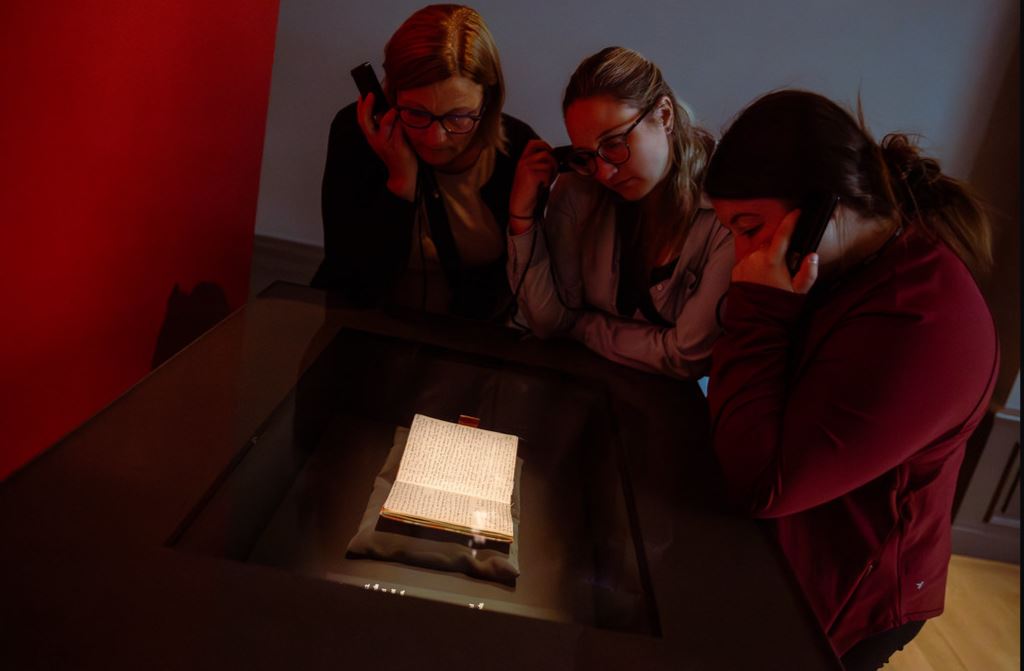
Source – Flickr
“Paper has more patience than people” – Ann Frank, 20 June 1942.
Anne received a diary as a gift for her thirteenth birthday, on June 12, 1942. This was just a few days before she and her entire family went into hiding in an attempt to evade Jewish persecution at the hands of the Nazi Germany. During these two years in hiding, this diary became Anne’s closest confidant. She candidly wrote about her daily life—thoughts, dreams, hopes, fears, and more. She also wrote about her fondness for Peter — a guy who hid along with his family at the same place where Anne and her family were hiding — and her vicious remarks about her mother, such as ‘My mother is in most things an example to me, but then an example of precisely how I shouldn’t do things’.
In essence, writing was her way to vent. “The finest thing of all is that I can at least write down what I think and feel, otherwise I would suffocate completely,” she penned while dwelling in a Secret Annex.
Uncovering the Secret Annex
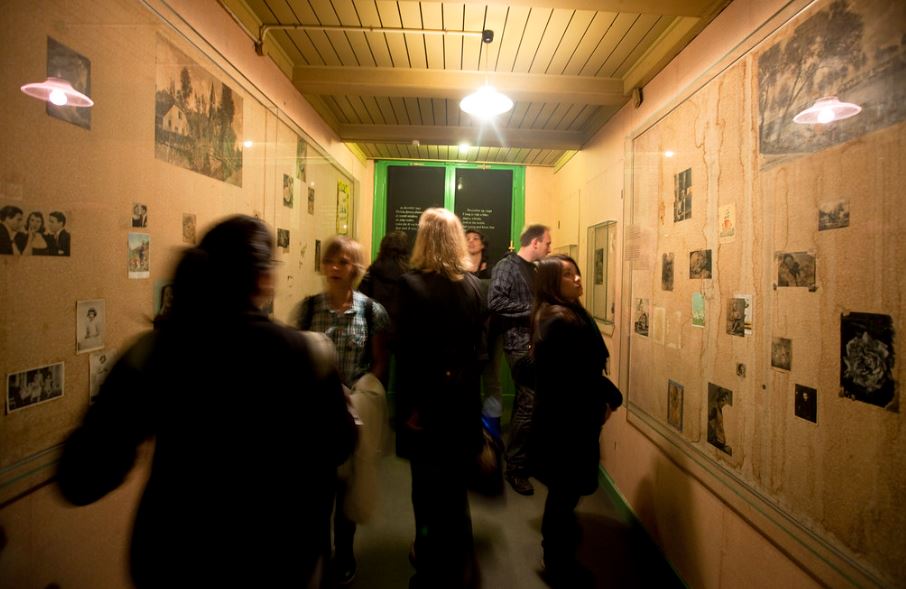
Source: Flickr
“The Annex is an ideal place to hide in. It may be damp and lopsided, but there’s probably not a more comfortable hiding place in all of Amsterdam. No, in all of Holland.” – Anne Frank, July 11, 1942.
From 1942 to 1944, Anne Frank, along with seven other people, lived in a Secret Annex. They were entirely dependent on six un-Jewish helpers who provided food, supplies, and news from the outside world. These helpers were business partners/employees/friends of Anne’s father, Otto Frank — the sole survivor amongst the annex’ residents. His wife, and Anne’s mother, Edith, fell victim to and was murdered in the infamous Nazi concentration camp of Auschwitz-Birkenau, while their daughters Margot Frank and Anne Frank died of typhus in the Bergen-Belsen concentration camp.
So what exactly was the Secret Annex?
Well, maybe some of you are frowning/raising your eyebrow, thinking, ‘O, Secret Annex; it’s a sort of hidden place; we all know.’
But how many of you truly know what Secret Annex is? How ingenious is its infrastructure? How many rooms did it house? What does it look like? And, going a step further, how does it even smell?
Hereunder, we present an in-depth view of Anne Frank House, its infrastructure, the significance of each room, as well as what life was like within the Secret Annex.
How It All Began?
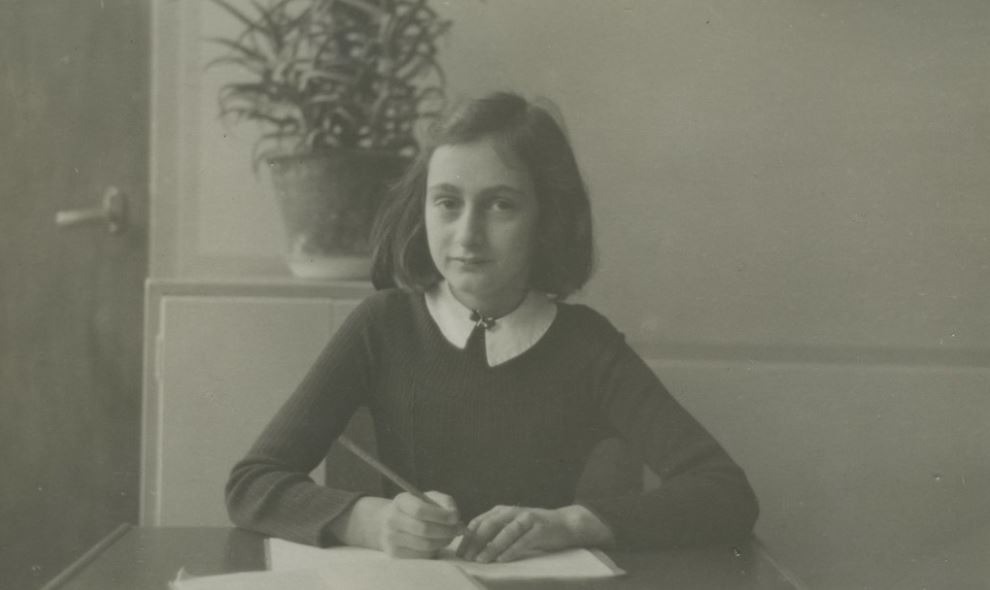
Source: Flickr
In December 1940, Otto Frank relocated his company, Opekta — which traded pectin, herbs, and spices — to Prinsengracht 263. Like other buildings along the Amsterdam canals, Prinsengracht 263 also entailed an Annex. The installation included three floors and an attic. The Annex existed at the topmost section of the top floor and extended into the attic. It was only in 1942 that Otto Frank made the pivotal decision to establish a concealed refuge there, serving both his own family and that of his employee, Hermann van Pels.
Quite notably, during their years in hiding, the company was being operated. The ground floor of the building served as a warehouse: where the company made pectin, a type of fruit jam. The first floor was used for administrative office work, while the top floor was used as a store room.
The Infrastructure
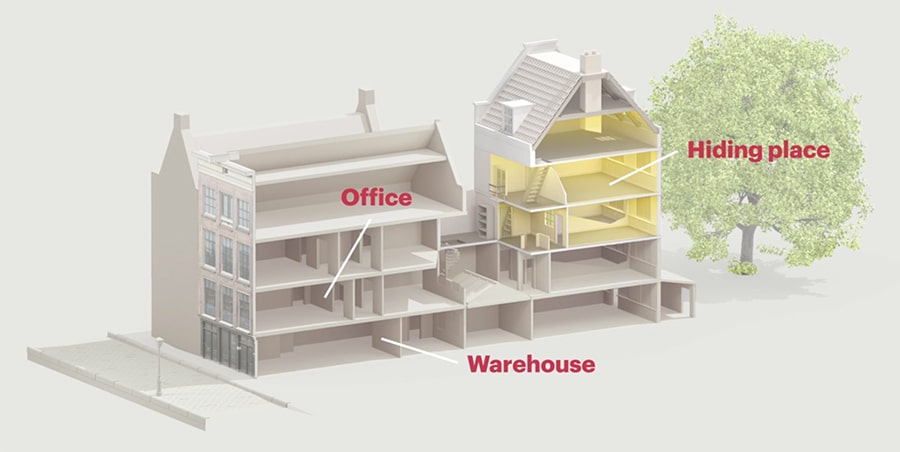
Source: hekidshouldseethis
The Secret Annex encompasses eight rooms spanning two floors and an attic. To enter, one must locate the hidden door flawlessly concealed behind a bookcase. It reveals a secret staircase that leads one to the living quarters up above.
First Floor
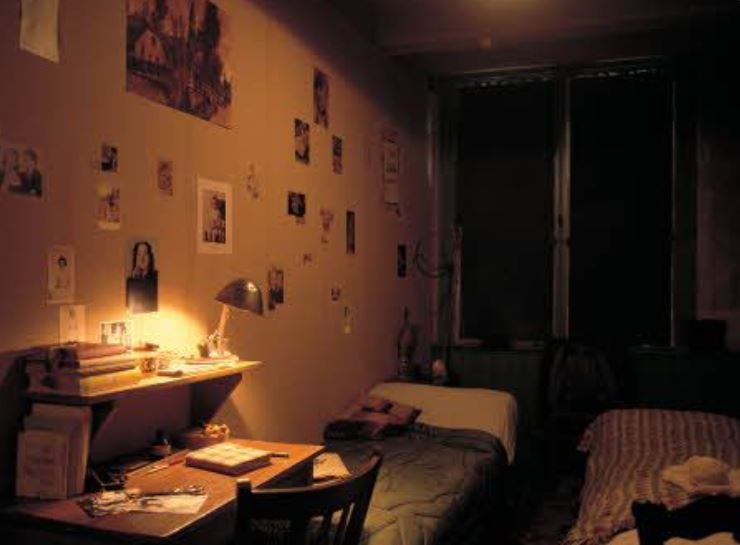
Source: Pinterest
There are three rooms — Anne’s room, living room, and bathroom.
Anne Frank—a sharp-tongued teenager, shared a room with Dr Dussel—a 54-year-old Dentist. It was not easy for the two to share the room due to their contrasting temperaments. Furthermore, the annexe’s small living space amplified these differences, making it all the more difficult for both to secure personal space and privacy. Dussel often commented on her behaviour and passed everything on to her mother. “He’s an old-fashioned pedant and thinks girls should stick to domestic matters. But what does he know about what goes on inside a girl’s head?” she penned. She also wrote that she wished she could ask God to give her another personality, one that did not antagonise everyone.
Another key area was the living room—a space that functioned as the communal heart of the Annex—where meals were shared, and conversations took place. At night, it became the bedroom of Otto, Edith, and Margot. Whereas, the bathroom, while modest, had a sink and toilet, shared by the eight people in hiding. Anne had her turn every evening from 9:00 pm to 9:30 pm.
“I wander from one room to the next, take a look at the fighting and discontented faces, feel like crying and don’t even know whose fault it is. I wish I had a girlfriend!” – Anne Frank, July 13, 1943.
Second Floor
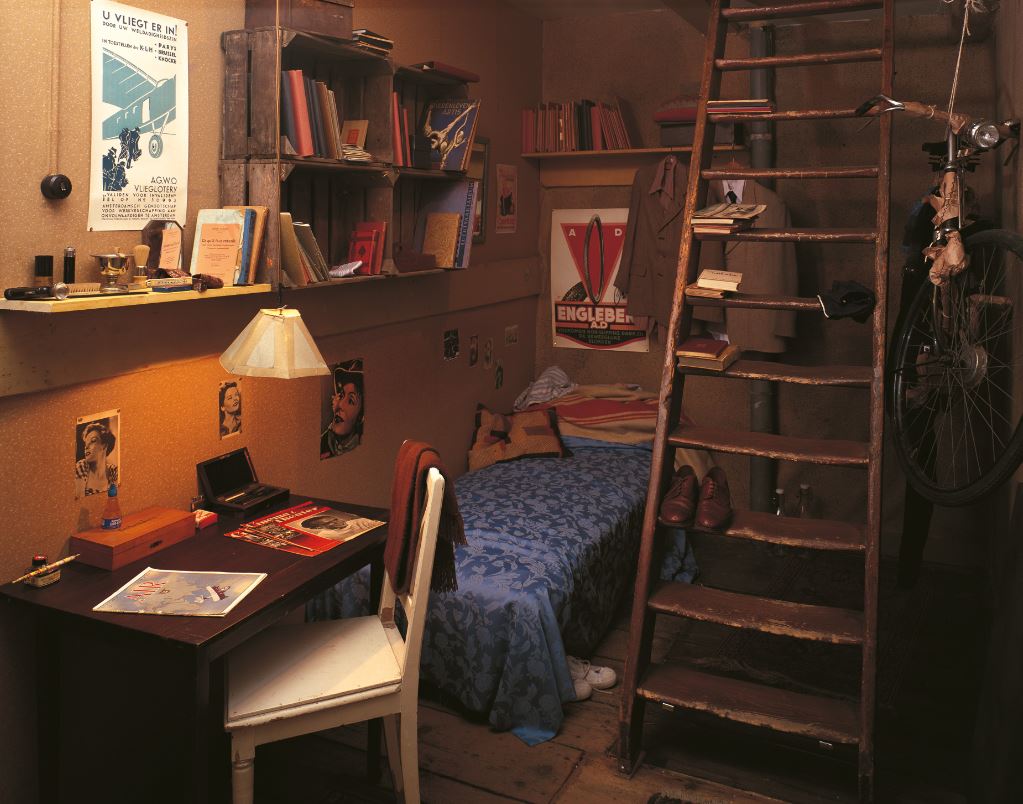
Source: Annefrank
There are two rooms — the kitchen, and Peter’s room.
The kitchen, although simple, was a gathering spot for the residents to cook, listen to the radio, and talk. This is where the occupants spent much of their time together. As the night descended, the room became the bedroom of Mr and Mrs Van Pels.
Right next to the kitchen was Peter’s room. This was a small and dark room, with a concealed window that faced the garden. The room contained a bed, a table, a chair, a shelf, and a cupboard. He also had a cat named Mouschi, who often slept with him. This was also where Anne and Peter used to talk, kiss, and cuddle. In the beginning, Anne felt that Peter was dull and boring; yet slowly but surely, they both fell in love.
“He clings to his masculinity, his solitude and his feigned indifference so he can maintain his role, so he’ll never, ever have to show his feelings. Poor Peter, how long can he keep it up?” – Anne Frank, March 06, 1944.
The Attic
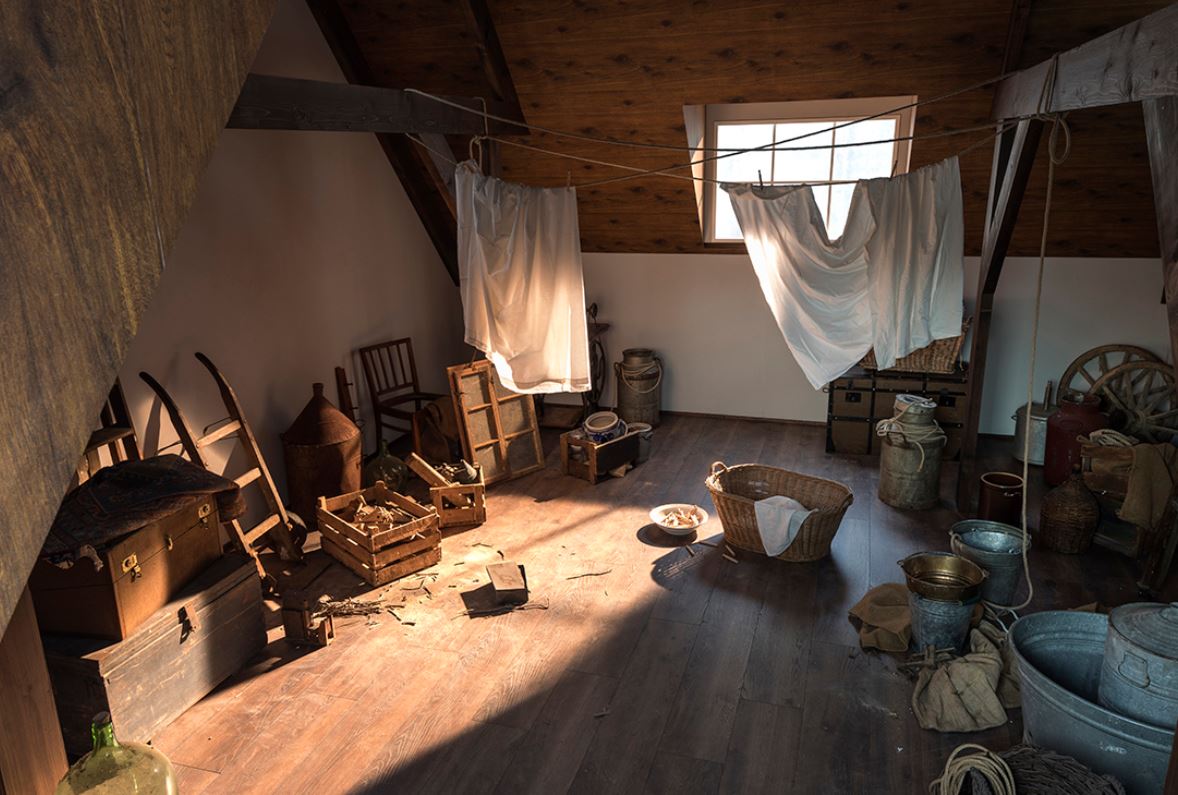
Source: cdnassets
The attic was the topmost and most spacious part of the Secret Annex. Anne would come here when she wanted to be alone or talk to Peter. To prevent discovery, all the windows in the Annex were masked with cardboard and curtains. They did, however, exclude the attic window, which gave Anne a chance to look out. And it proffered a view of the sky and the chestnut tree in the garden.
“As long as this exists…this sunshine and this cloudless sky, and as long as I can enjoy it, how can I be sad?” she wrote.
Moreover, the attic functioned as a storage space, housing surplus supplies of food and household goods. Besides, the crew would hang up their laundry and store their personal belongings — the dearest items they had brought up upon their arrival. It also served as an escape route; in case of emergency, there was a ladder that led to the roof, where there existed a hatch that could be opened to access another building.
“ ‘Outside, fresh air and laughter,’ a voice inside me screams; I don’t even try to answer anymore, I lie down on a divan and sleep in order to shorten the time, the silence, the terrible fear too, because there is no question of killing them.” – Anne Frank, August 08, 1944.
On August 4, 1944, the Gestapo discovered the Secret Annex. Everyone got arrested and deported to concentration camps. Only Anne’s father, Otto Frank, survived the war and returned to Amsterdam, where he found Anne’s diary, abandoned in a fragmentary state, and arranged for its publication. Remarkably, it became one of the world’s most widely read books.
The House: Today and Beyond
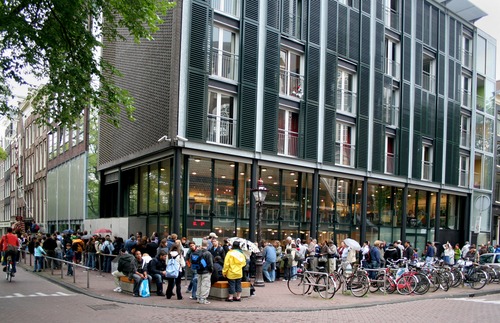
Do you know what makes a book/diary great? ‘Great books help you understand, and they help you to feel understood’. That’s why the Anne Frank House attracts an average of 1.3 million visitors annually, around 3,500 people per day. According to the annual report for 2019, the Anne Frank House generated a total income of USD 19.7 million, of which USD 14.1 million came from visitors.
“I think it is not only important that people go to the Anne Frank House to see the Secret Annex,” Otto Frank, Anne’s father says, “But also that they are helped to realise that people are also persecuted today because of their race, religion, or political convictions”.
Today, Anne Frank’s house stands testament not just to a horrible experience of what once was for a group of people, but also a towering reminder of what should never be in the generations that follow.





































